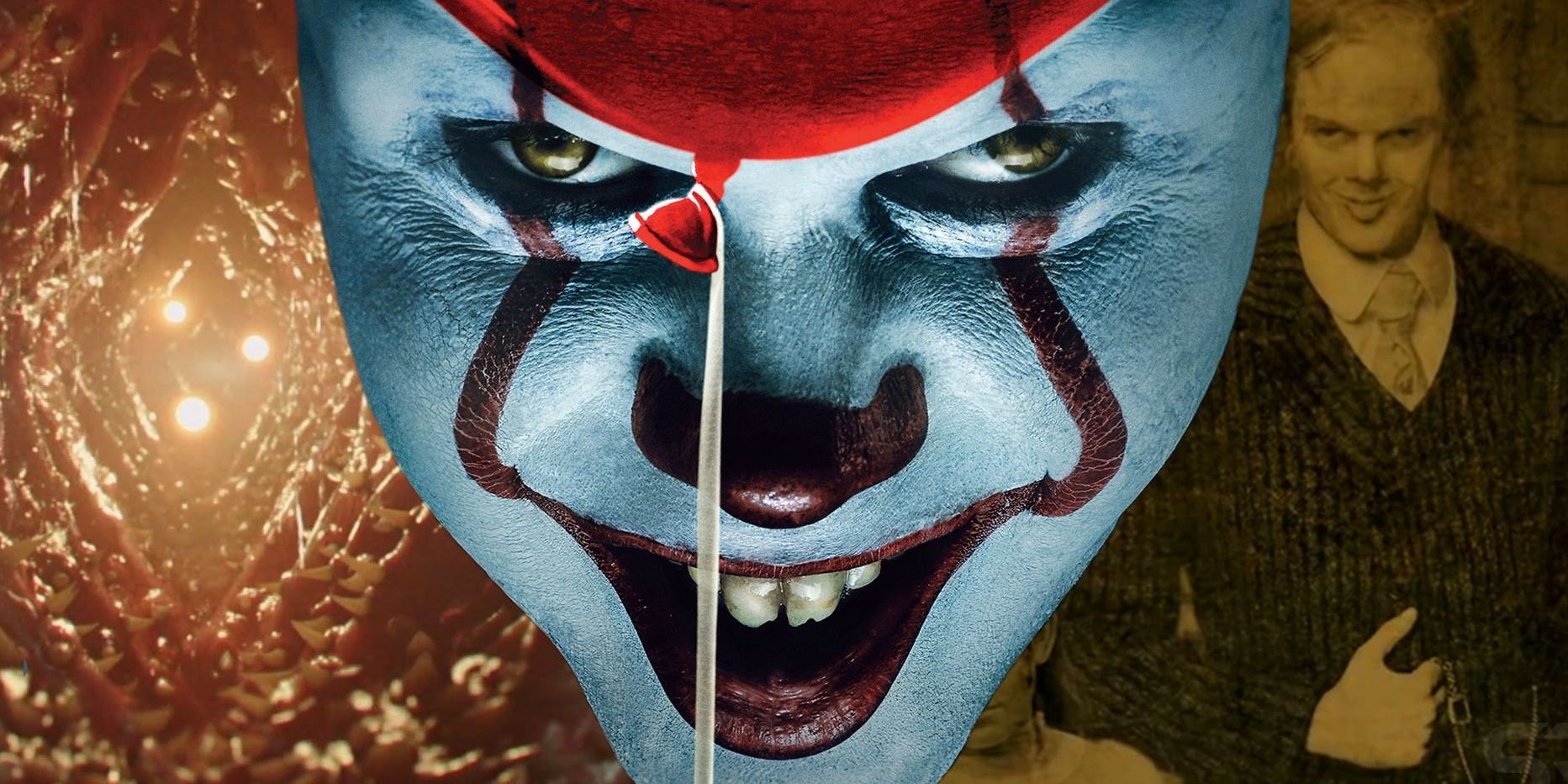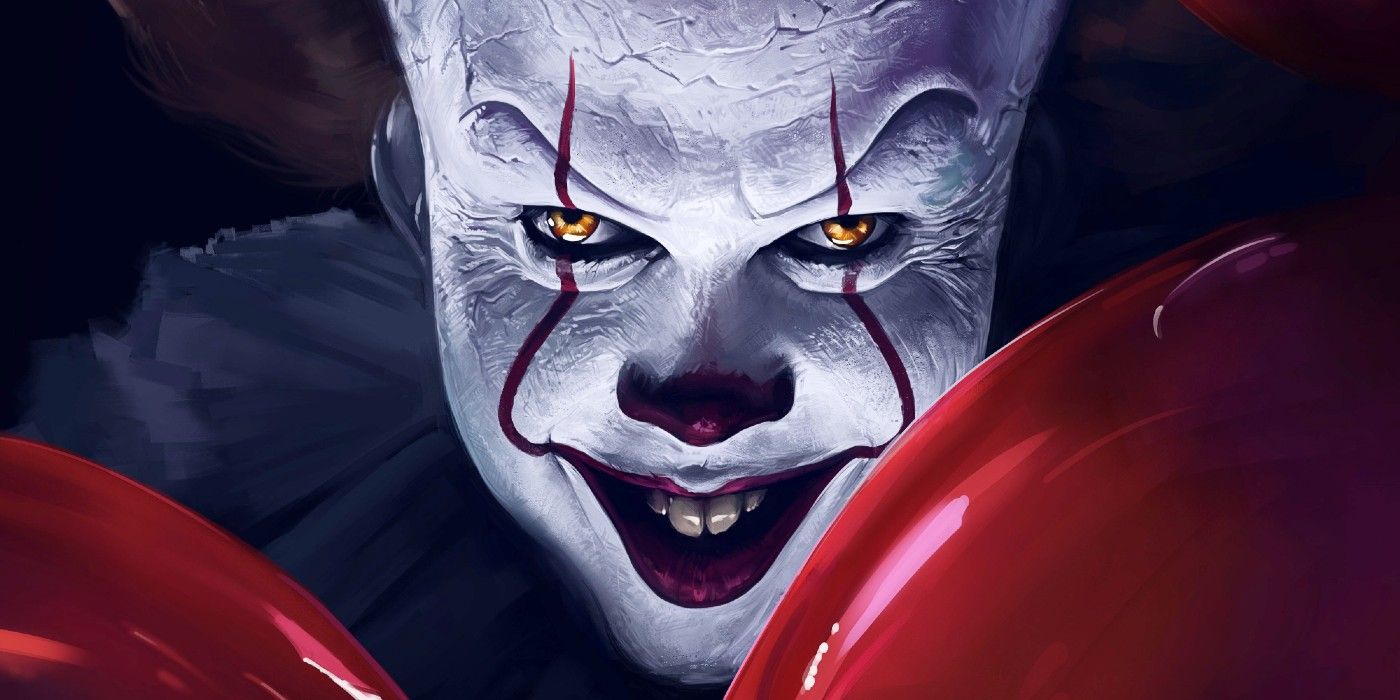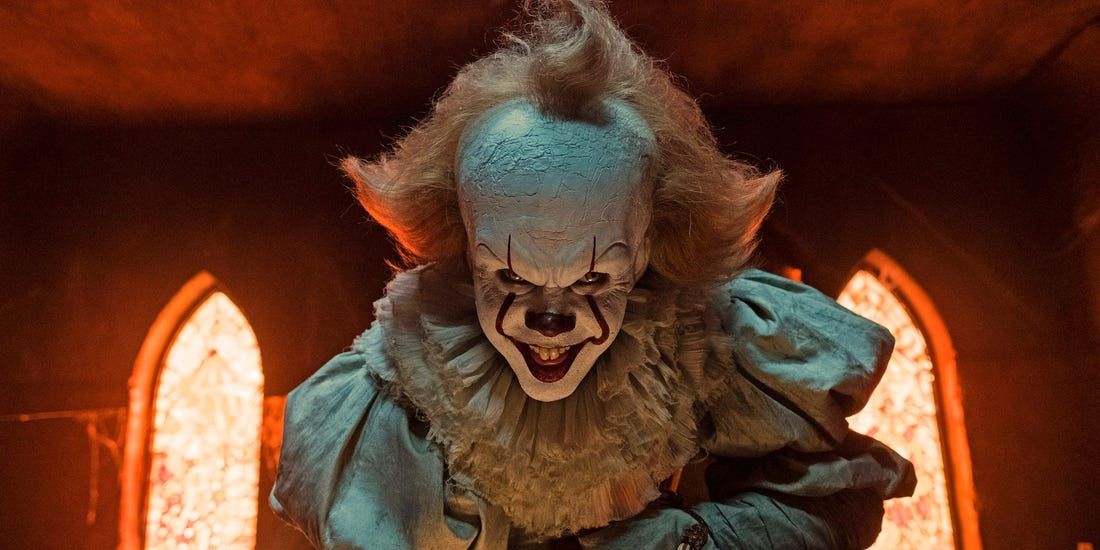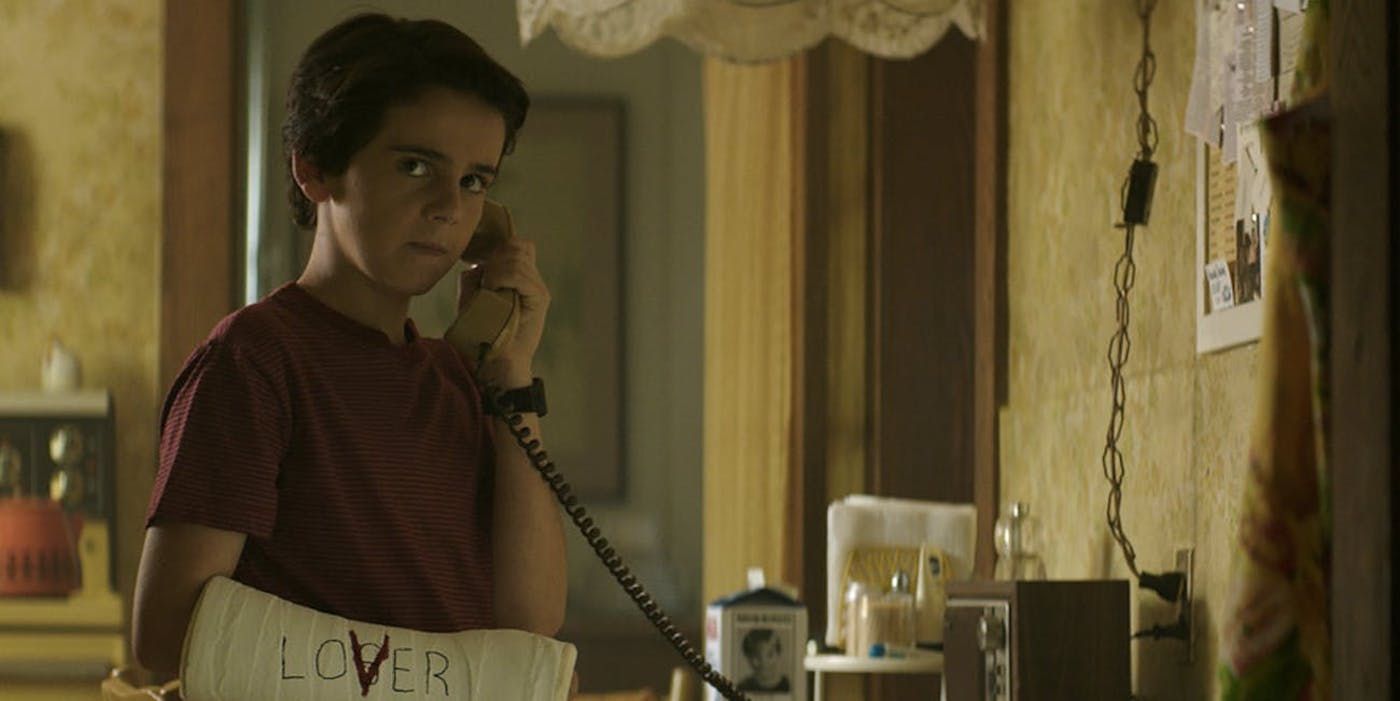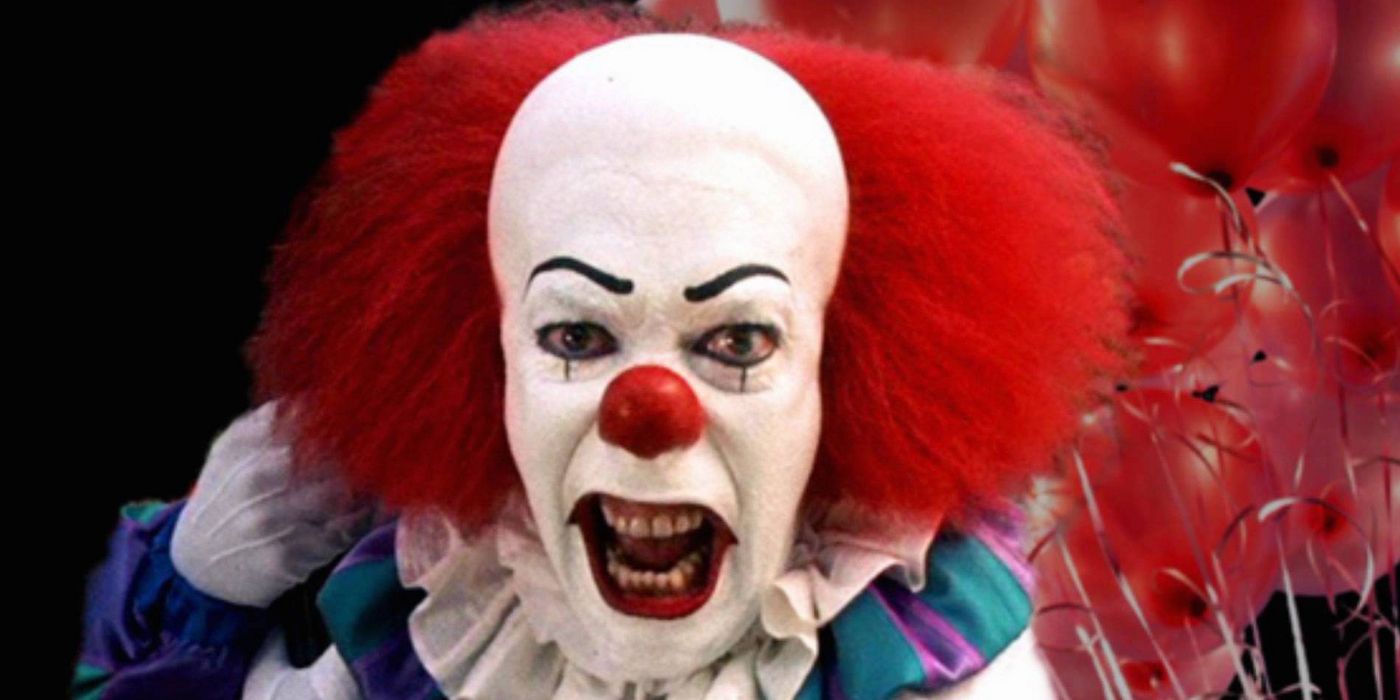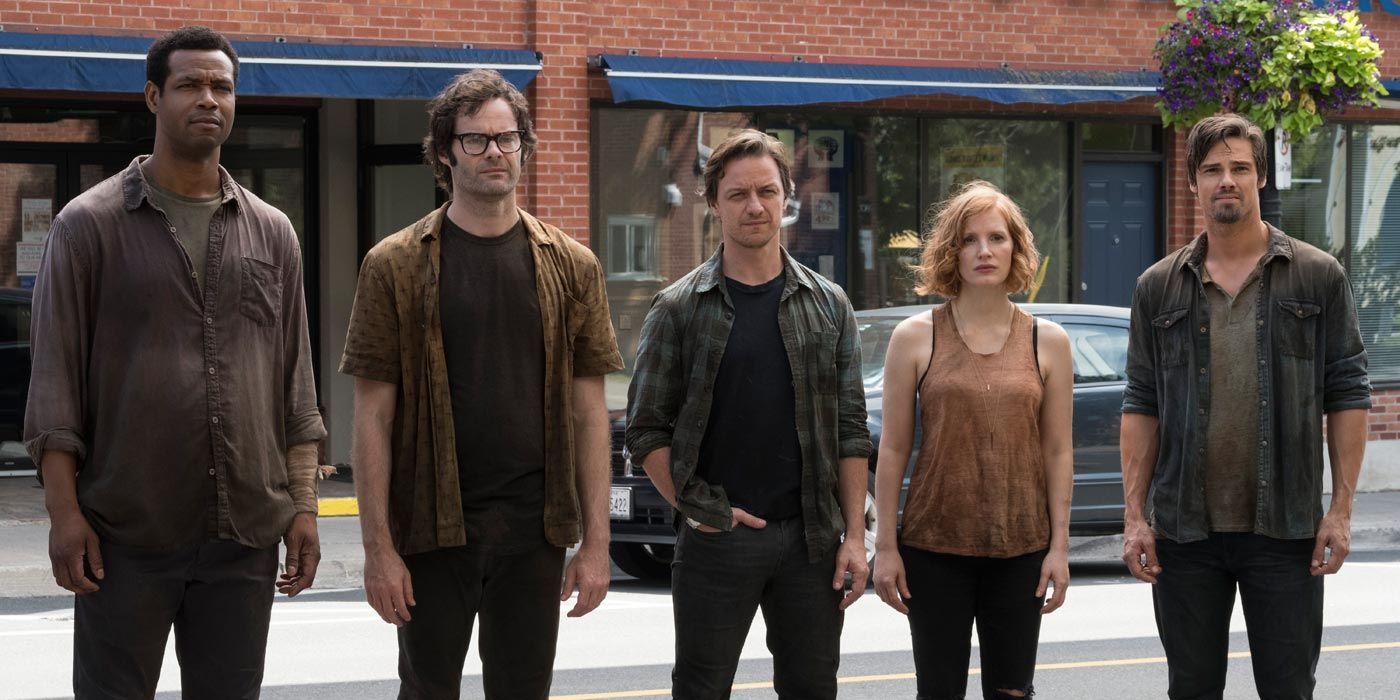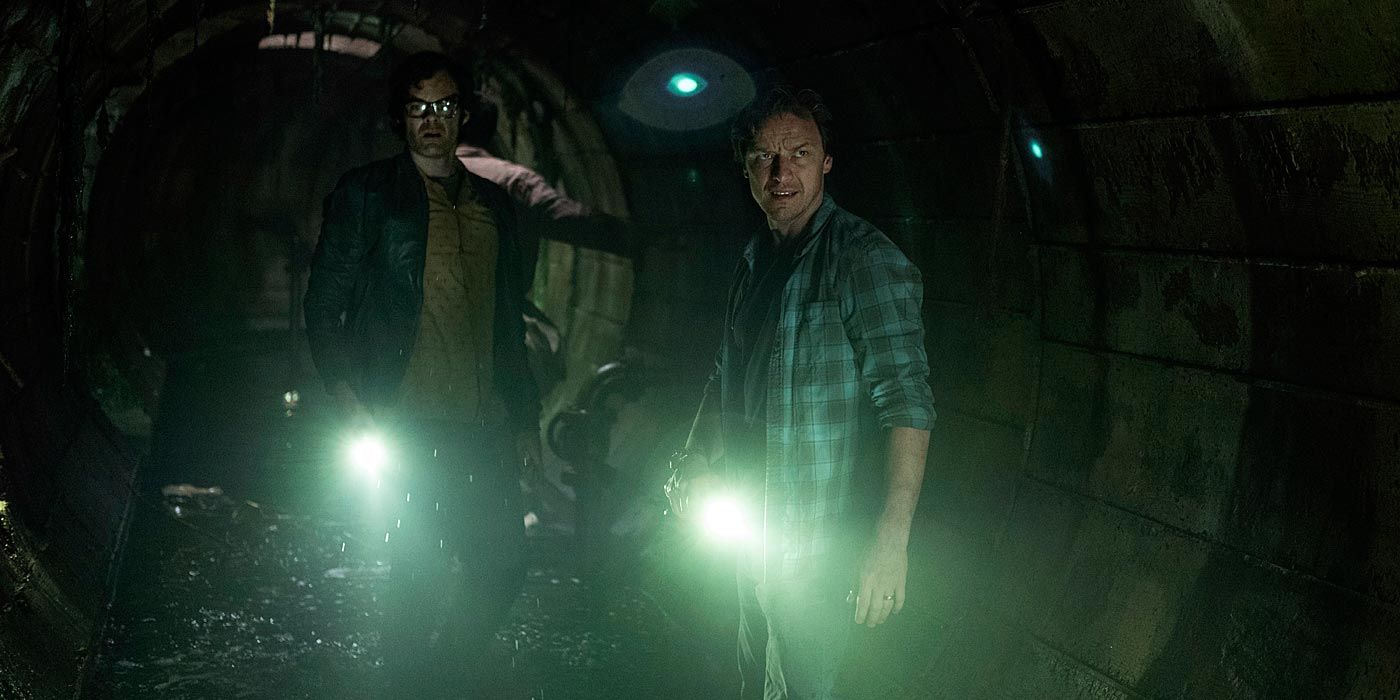As the calendar flips to October and spooky season officially kicks off, it's time for slashers, ghouls and demonic beings to get the spotlight. A perennial horror favorite is Pennywise, the creepy clown entity from Stephen King's IT. Clowns and the uncanny valley feel of their painted faces are often synonymous with horror, but Pennywise is especially iconic, with IT getting two major adaptations: the 1990 miniseries and the two-part movies in 2017 and 2019.
Both versions did their jobs well by lightly traumatizing a generation. And while they both have the same source material and ultimately the same story, there are very stark differences between the two. Which version is scarier and more immersive? Looking at the miniseries and movies head-to-head, here's how the Stephen King adaptations stack up.
Is Tim Curry or Bill Skarsgård's Pennywise Scarier?
The main attraction of any IT adaptation is, of course, the titular clown himself, Pennywise. As an ancient force of cosmic evil, the clown Pennywise is simply the form it takes to terrorize the children of Derry, Maine. There's something innately unsettling about clowns, as their painted faces can hide true identities and there is a juxtaposition of childish entertainment belying a hidden evil. Both Tim Curry and Bill Skarsgård tapped into the off-center energy of Pennywise, not merely playing him as a straightforward terror but something more uncomfortable.
Curry's 1990 Pennywise plays up the uneasy feeling. His Pennywise sports classically bright and inviting colors and, until he opens his mouth to reveal his sharp teeth, doesn't look too different from a regular party clown. Skarsgård's 2017 version, however, leans into the otherworldly a little more, with Pennywise feeling less like a potential neighborhood creep that could drive a white van and more alien and slightly off-center. His appearance is more outwardly scary, too, with his makeup and outfit looking like a haunted doll. Curry's creep factor is more insidious, while Skarsgård's is more aesthetic.
The IT Films Have Better Special Effects
Not only are the two adaptations decades apart, giving the 2017 and 2019 films the clear advantage in updated technology, but they also were made for different mediums. The 1990 version was a miniseries made for television and with that came a smaller budget than the big screen movies of 2017 and 2019. From the many forms that Pennywise morphed into in the 2017 film to his creepily CGI-contorted dance and the impressive scale of the floating bodies shown in his lair, the more recent film definitely has a larger scale and infinitely more nuanced effects. However, there is something to be said about the practical and limited effect of the miniseries. Though they aren't mind-blowing, there's something tangible about their almost campy feel that grounds the scares in an entirely different way.
The IT Miniseries Stays Faithful to the Book
The miniseries tackles the story in the present day, with the adults flashing back to their terrifying summer in Derry, Maine, while the film is split into two distinct chapters, with the first one covering the events as children and the second focusing on their adult lives and return to Derry. With both adaptations, some places stick closer to the source material and aspects that stray farther away. In terms of exact dialogue and the forms that Pennywise takes to terrorize the kids, the 1990 miniseries is more aligned with the novel. It also more closely adheres to character arcs and the spirit of togetherness that allowed the Losers' Club to defeat Pennywise in the first place.
The 2017 movie, understandably, introduces some updates and adjustments, but overall captures the tone of the novel better. What's more, it also introduces other elements of the larger universe of Stephen King's works, such as the subtle headlights in Pennywise's throat and the mention of turtles. In expanded Stephen King lore, Maturin the Turtle is another cosmic entity and one of the twelve Guardians of the Beams who is Pennywise's otherworldly mortal enemy.
The IT Films Adjust the Time Period
Going hand-in-hand with staying true to the source material, the time periods in which both installments take place are different, too. As the novel itself was published in 1986, the 1990 miniseries version was obviously close enough in time production that the eras were the same, with the childhood plot taking place in the 1960s and the present day adulthood arc happening in the late 1980s. However, when it came time for IT to get the big-screen treatment in 2017, it was understandably updated for the current audience, with the story taking place first in the late 1980s and then in the 2010s.
The IT Films' Runtimes Exceed the Miniseries
The two-part miniseries from 1990 is relatively long, but only clocks in at three hours and 12 minutes altogether, which is a pretty reasonable amount of time to tell the full story. The movies, however, both run rather long separately, with IT Chapter 1 running two hours and 15 minutes long while IT Chapter 2 clocks in at a rather long two hours and 49 minutes, making the total runtime of the two movies combined to over five hours long. While it does allow for more world-building and storytelling, parts of IT Chapter 2, especially, can feel a bit bloated.
The miniseries itself is easier to binge all in one night, but the two chapters of the movie adaptations take viewers on a deep dive into Derry, Maine lore. Depending on the mood, the shorter or longer runtimes can be either a pro or a con. The shorter runtime of the miniseries allows for a faster pace, moving the story along at an exciting pace. The movies, particularly the second one, can become a little bogged down by their own length.
Which IT Adaptation is Scarier Overall?
So which version of IT is scarier at the end of it all? It's a very subjective question, and both movies make compelling cases. Curry's dedication to being unsettling and the tighter narrative pace of the 1990 miniseries definitely make for a memorable nightmare. The upgraded effects and the more sinister appearance of Skarsgård's Pennywise, coupled with a darker tone overall, though, make both the 2017 and 2019 movies creepy classics, too. Depending on how insidious one prefers their horror, the pendulum can easily swing in either clown's direction.

